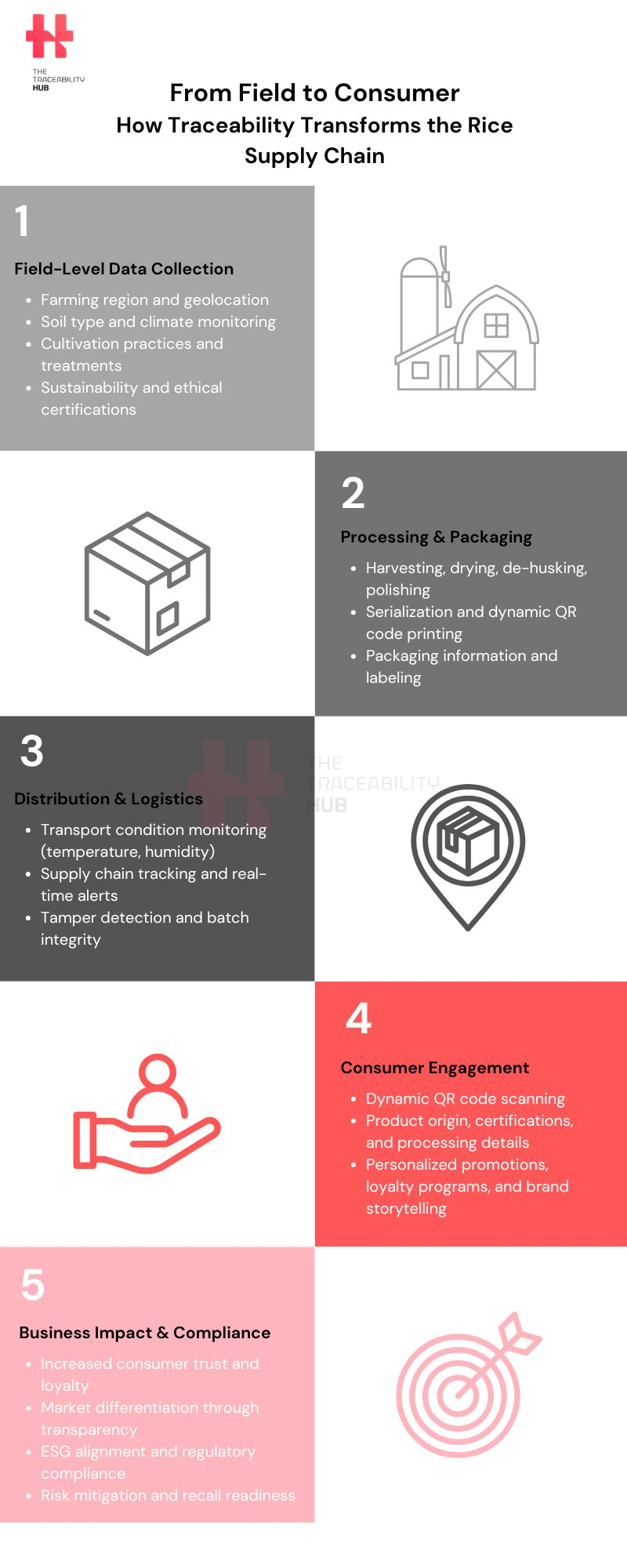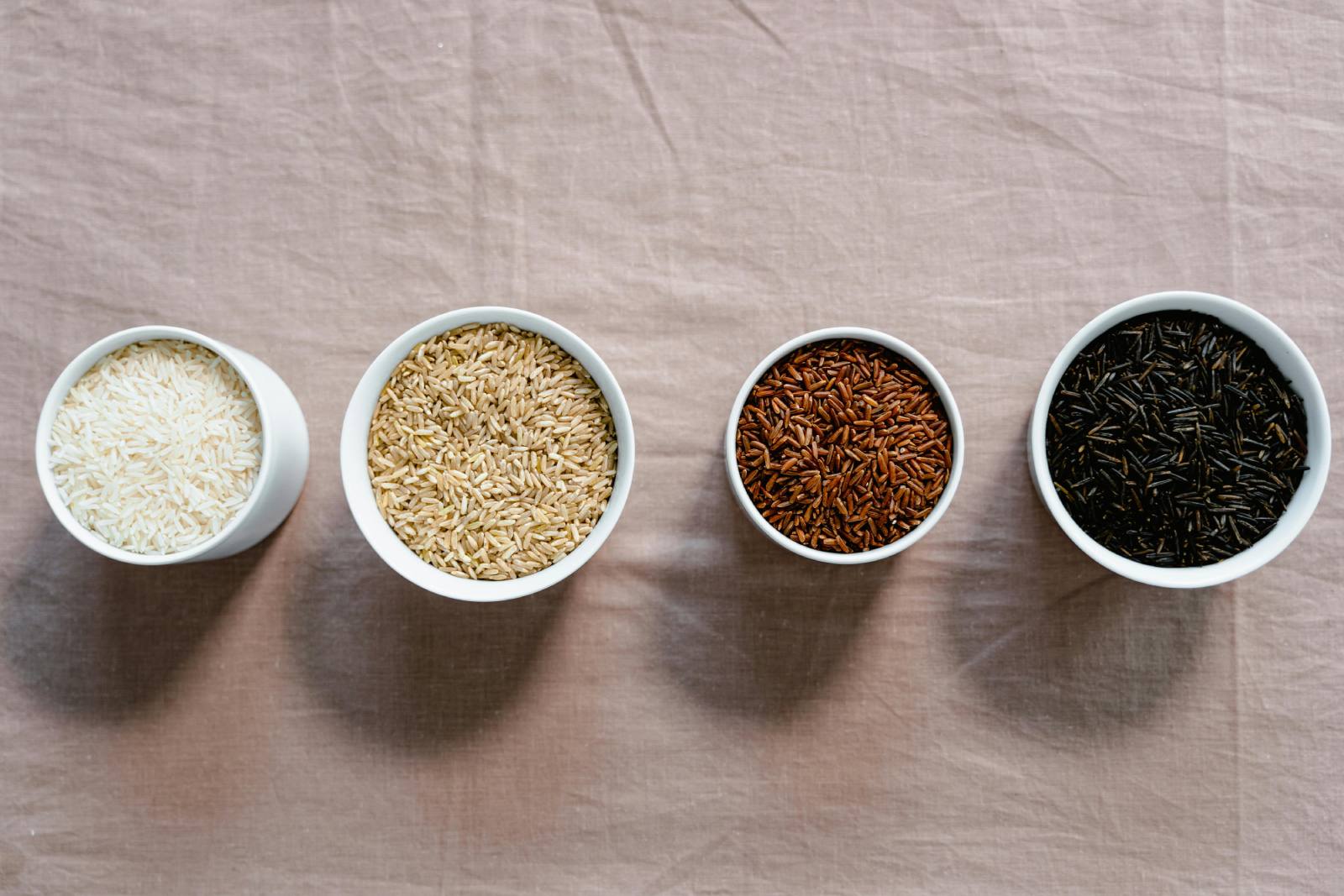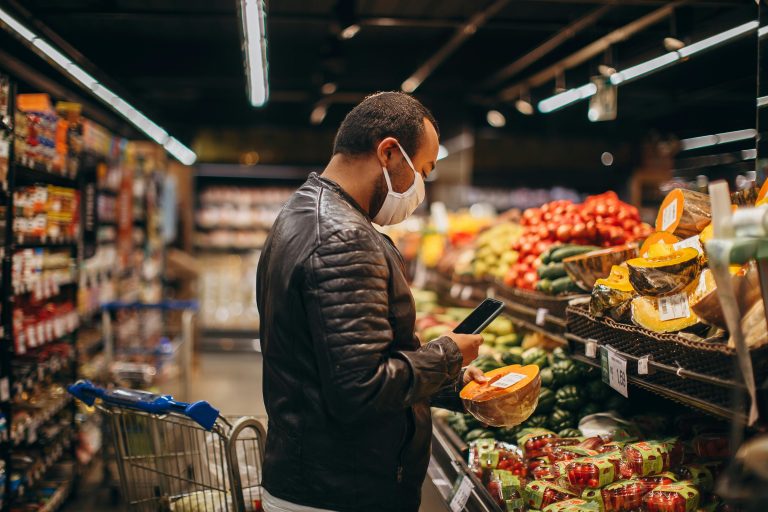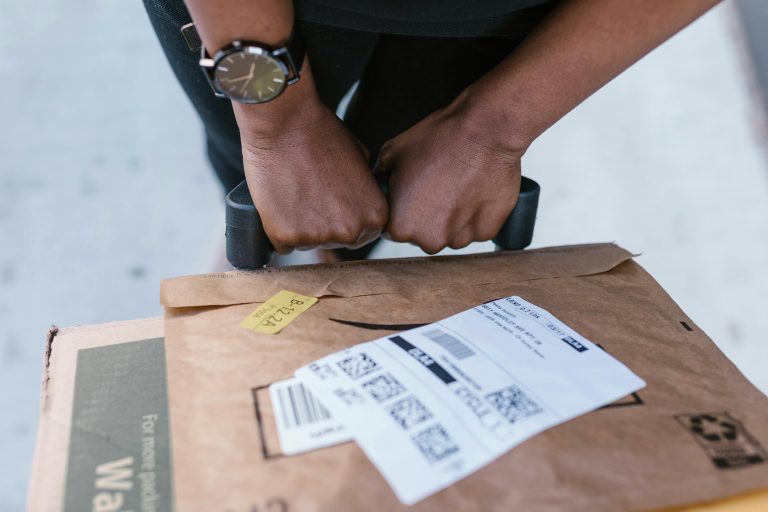Traceability of Raw Materials
These days, people don’t just want to eat well; they want to know exactly what they’re eating, where it came from, how it was made, and whether it was produced ethically and sustainably. In the food world, that demand for transparency is stronger than ever.
Rice, one of the world’s most essential staples, isn’t exempt. It’s under more scrutiny than ever. Is it really from where the label claims? Was it grown using safe and responsible farming practices? And how can a brand prove that what’s on the package matches what’s inside?
This growing pressure has made raw material traceability a must-have, not just a nice-to-have. In this article, we’ll explore how one rice brand used digital material traceability tools like dynamic QR codes and cloud-based traceability software to show customers exactly what they’re buying.
Traceability of Raw Materials: Challenges and Issues for Brands
Raw Material Traceability in Food: Product Quality Assurance
A lot goes into producing high-quality rice – soil quality, weather conditions, and more. Without a clear view of what’s happening at each step, things can easily go off track. Traceability of raw materials helps brands stay on top of it all. From field to factory to fork, they can follow the rice’s journey to make sure it meets strict quality and safety standards. When customers ask, “How was this grown?” brands will have the answers backed by real data.
Traceability of Raw Materials for Transparency and Consumer Trust
Today’s shoppers have more awareness, and therefore they are cautious. They want to know where their food comes from and how it’s made. If they don’t get those answers, they may walk away. By offering that transparency upfront, through a QR code on the packaging, brands can build trust. When a customer scans a code and sees the exact region the rice was grown in or the methods used to harvest it, they’re not just buying rice. They’re buying transparency and confidence.
Sustainability and Ethical Sourcing Traceability Practices
More people now care about the planet and how their food choices affect it. They want to support brands that use responsible farming methods and treat workers fairly. Traceability systems can help companies show proof of their sustainability efforts, like using less water and avoiding harmful pesticides for customers who care about ESG (environmental, social, governance) values, that’s a powerful selling point.
Sustainable Raw Material Sourcing for Prevention of Food Fraud
Food fraud is a real issue, especially in the rice industry, where mislabelling and blending lower-quality grains are common tricks. A bag might say “Made in Italy,” but without proof, there’s no way for a consumer to know if that’s true. That’s where raw material traceability in food makes all the difference. With a reliable digital system in place, brands can guarantee authenticity and catch onto issues early. It’s about transparency as well as protection.
Raw Material Traceability – Customer Request: Product Traceability & Consumer Engagement
One premium rice brand came forward with a specific request – they wanted a raw material traceability solution that could back up their “Made in Italy” label with real, verifiable data. Then, they wanted to share that story with consumers.
Their goals were clear:
- Material origin tracking: Show where the rice was grown, right down to the region and field
- Highlight sustainable farming practices
- Track everything from harvesting to packaging and delivery
- Give consumers a quick and engaging way to access this information
Ultimately, they wanted to do more than just comply with regulations. They wanted to create a premium, transparent experience that customers could connect with and trust.
Raw Material Tracking System: Proposed Solution
Dynamic QR Code Printing in Line
The solution started with something simple but powerful – a QR code raw material traceability.
Each rice package now gets a unique, serialized QR code printed directly during production. When someone scans the code, they’re taken to a personalized page filled with rich details about that specific product.
Scanning displays the following information:
- The region and the specific field where the rice was grown
- Soil and climate conditions
- Details about cultivation methods and certifications
- Proof of its Italian origin
- How it was harvested, milled, and packaged
- Bonus content like recipes, stories from farmers, and brand messages
These QR Code raw material traceability are based on GS1 Digital Link standards, which means they work across global systems and follow best practices for traceability. Best of all, they fit seamlessly into the brand’s existing production process.
From Field to Consumer – How Traceability Transforms the Rice Supply Chain

Digital Material Traceability: Software Solution for Consumer Engagement
Behind the scenes, a cloud-based software platform keeps everything organized. It links every QR code to live, customizable content. This way, the brand can update what people see based on where they scan.
With QR Code raw material traceability consumers get:
- Location-based content when they scan
- Personalized offers or loyalty points
- Important alerts, like sustainability updates or food safety messages
And because it’s cloud-based, the system is flexible and future-ready.
Implementation & Traceability Framework
Source-to-Product Traceability: Field Information
It all starts at the farm. The system captures details like:
- The exact location and soil type of the fields
- Climate data during the growing season
- Records of irrigation, pesticide use, and sustainability certifications
- Ethical labour compliance checks
Traceability in Manufacturing: Transformation & Packaging
Next comes processing. Every step is logged, including:
- When and how the rice was harvested and dried
- Milling, quality grading, and storage conditions
- Packaging formats and label checks
- Serialization at the packaging line (a unique identification code)
Supply Chain Traceability: Distribution & Logistics
The journey doesn’t stop at packaging. Logistics are also tracked:
- Transport routes
- Environmental conditions like temperature and humidity
- Alerts for any delays or issues along the way
Raw Material Traceability for Consumer Engagement
For consumers, all this data becomes a rich, interactive experience:
- Visual storytelling about where and how their rice was grown
- Real-time food safety alerts or recall notices
- Opportunities to join award and loyalty programs, or sustainability campaigns
- Educational content about recycling or farming practices
Raw Material Traceability: Business Benefits for the Brand
Market Differentiation
By offering this level of transparency, the brand is offering peace of mind. That’s a powerful way to stand out in a crowded market.
Raw Material Traceability for Enhance Consumer Loyalty
Consumers are more likely to stick with a brand when they feel informed and valued. A personalized, engaging QR code experience makes that connection even stronger, while the brand can collect several data from the consumers.
Stronger Marketing & Storytelling
With real data about where and how their product is made, the brand has a goldmine of authentic marketing content.
Improved Supply Chain Integrity
Internally, traceability gives the brand better control over every part of its supply chain. That means fewer surprises and quicker problem solving. The supply chain includes several stakeholders, from the producers, farmers who cultivate rice, processors, to rice millers and traders who handle the processing and distribution. As well as distributors, wholesale traders and retailers who bring rice to the market.
Traceability of Raw Materials: Next Steps
Traceability is related first to logistics, but also about building trust. For a product like rice, where quality, origin, and ethical production are under the spotlight, showing your work makes all the difference. And it gives a better control on the supply and trading chains. By investing in digital traceability, brands don’t just meet today’s standards, they set themselves up for the future. Stronger consumer relationships, better supply chain control, and a real competitive edge are just the beginning.
And as technology continues to evolve, there’s even more potential ahead – think AI-powered personalization, digital product passports, and next-level consumer engagement tools.
Read more: Real-World Applications of Digital Product Passports (DPPs)






